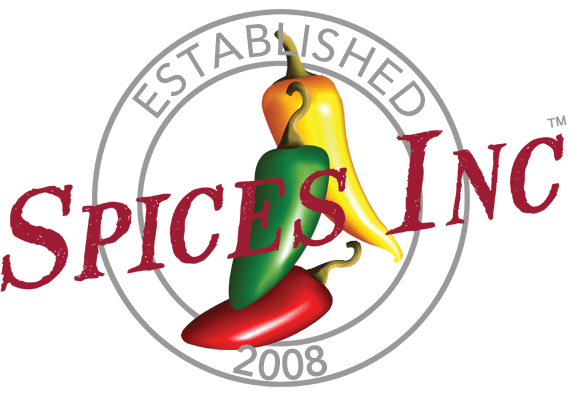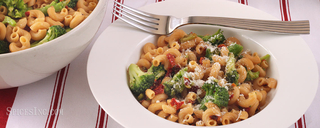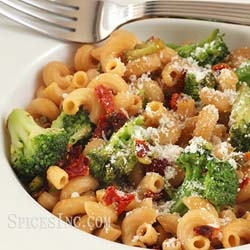Organic Crushed Red Pepper Flakes
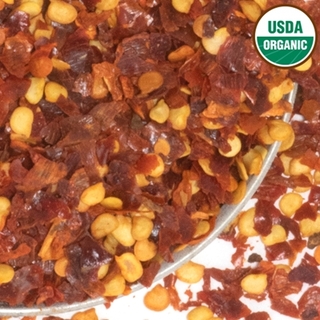
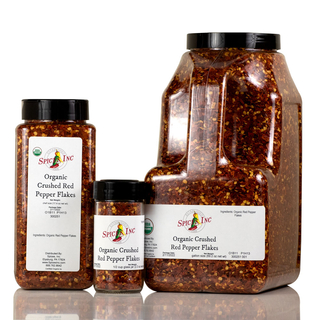


Organic Crushed Red Pepper Flakes
Organic Crushed Red Pepper Flakes, Capsicum annuum, are also called organic red pepper flakes, organic crushed red pepper, or organic chili flakes. Our Organic Crushed Red Pepper Flakes are valued for their heat more than for their flavor, adding a sharp bite to dishes from around the world.
These flakes come from several types of chile peppers that fall into the desired heat range. Once the peppers are picked, the whole pepper is dried and pulverized, which includes the outer skins, veins, and seeds.
Organic Crushed Red Pepper Flakes are popular with seasoning companies, pickling, fermenting, condiments, cheese, and keto, paleo, and vegan manufacturers, food trucks, healthy, vegan, and Mediterranean restaurants, and spice and olive oil shops.
Flavor Profile
Organic Crushed Red Pepper Flakes taste hot with a sharp, biting flavor.
Heat Level
Organic Crushed Red Pepper Flakes are hot, measuring 30,000 – 40,000 SHU (Scoville Heat Units).
How To Use
Organic Crushed Red Pepper Flakes provide a nice liveliness to a variety of cuisines. They are excellent in chilis and chowders like this Crab and Corn Chowder. Add heat to creamy dishes by stirring it into this Spicy Coconut Shrimp. Fire up some Broccoli and Sun-Dried Tomato Pasta with a sprinkling of Organic Crushed Red Pepper Flakes. Or put this in the marinade to boost the spiciness of Sichuan Cornish Hens.
Red pepper flakes pair well with most spices, lemon juice, lime juice and coconut milk. Because they're typically a member of the nightshade family, they work well in combination with potatoes and tomatoes. Use Organic Crushed Red Pepper Flakes to add zest to chili, chowders, pickling, salads, homemade sausage, sandwiches, soups, spaghetti sauce, stir-fries, or vegetable recipes.
| Also Called | Organic red pepper flakes, organic crushed red pepper, or organic chili flake |
| Species | Capsicum annuum |
| Ingredients | Dried organic hot red peppers, crushed |
| Flavor Profile | Hot with a sharp, biting flavor |
| Scoville Heat Units | 30,000-40,000 SHU |
| Recommended Uses | Chili, chowders, pizza, pastas, pickling, salads, sausage, sandwiches, soups, sauces, stir-fries, or vegetable recipes |
| Cuisine | Italian, African, Chinese, Indian, Mexican |
| How To Store | Airtight container in a cool, dark place |
| Shelf Life | 6-12 months |
| Country of Origin | India |
Nutrition Facts
Serving Size1 tsp
Amount Per Serving
Calories6
% Daily Value*
Total Fat0g1%
Saturated Fat0g0%
Trans Fat0g
Polyunsaturated Fat0g
Monounsaturated Fat0g
Cholesterol0mg0%
Sodium0.6mg0%
Total Carbohydrate1.1g0%
Dietary Fiber0.5g2%
Total Sugars0.2g
Added Sugars0g0%
Sugar Alcohol0.0g
Protein0.2g0%
Vitamin D0mcg0%
Calcium3mg0%
Iron0mg1%
Potassium38mg1%
*The % Daily Value (DV) tells you how much a nutrient in a serving of food contributes to a daily diet. 2,000 calories a day is used for general nutrition advice. These values were calculated and therefore are approximate. For more accuracy, testing is advised.
